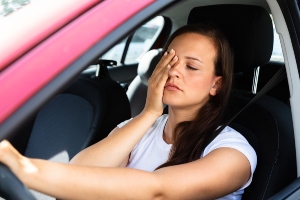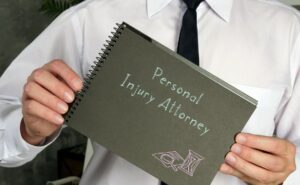
Motor vehicle crashes are the leading cause of death for teens. However, there are ways to help them become a safer driver and prevent or reduce these deaths and injuries. One way is to make sure your teen driver knows the risk factors and is aware of the eight danger zones (from the CDC) that can cause a teen driver to crash.
The crash risk for a teen driver is highest in the first year they have their license, especially the first several months. Teens are not as familiar with the rules of the road, may not understand or pay attention to blind spots, and are more likely to not recognize dangerous situations.
Teens should obtain as many hours of supervised driving practice as possible during this time practicing on different types of roads during different times of day and in different weather.

The crash risk goes up when teens drive with other teens or young adults in the car. Studies show that a teen’s chances of getting into an accident increase with each additional teen passenger in the car.
Limit your teen to just one teen or young adult passenger. The best practice, however, is to not have any other teen passengers for at least the first six months after they get their license.
Fatal crashes are more likely to occur at night and are a greater risk for teens. The fatal crash rate at night among teen drivers (ages 16-19) is about 3 times as high as that of adult drivers (ages 30-59) per mile driven. In 2020, 44% of motor vehicle crash deaths among teens ages 13-19 occurred between 9 p.m. and 6 a.m. and 50% occurred on Friday, Saturday or Sunday.
Teen drivers should be off the road by 9 or 10 p.m. the first 6 months of licensed driving and should practice nighttime driving with their parents or another experienced driver.
Teen drivers do not always consistently wear a seat belt, but this is the simplest and easiest way to prevent car crash injuries and death. Teens should wear seat belts whether they are the driver or passenger.
Distractions of all kinds increase your teen’s risk of being in a crash. This includes adjusting the dials on the dashboard, eating, using the GPS, texting, emailing, and talking.
Cell phones are the most significant contributor to a driver’s inattention to his vehicle and others on the road. The best advice is to turn the phone off and put it out of reach while driving.
 Drowsy Driving – Danger Zone #6
Drowsy Driving – Danger Zone #6Teens are typically most tired and at risk when driving in the early morning or late at night.
Research shows that teens lack the experience, judgment, and maturity to assess risky situations. Make sure teen drivers know to follow the speed limit and to adjust speed to match road, traffic, and weather conditions and maintain enough space behind the vehicle ahead to avoid a crash in case of a sudden stop.
Drinking any amount of alcohol before driving increases crash risk among teen drivers. They have a higher risk of being involved in a crash than older drivers at the same blood alcohol concentration (BAC)
Impaired driving includes all types of substances, including alcohol, marijuana, other illicit drugs, prescription meds and over-the-counter medications.
Source: CarSurance

If your teen driver has been seriously injured in an accident. contact the Kansas City-based law firm of Nash & Franciskato at (877) 284-6600.. One of our experienced staff will speak with you personally and provide you with a free, no-obligation case evaluation.
START YOUR FREE CASE EVALUATION TODAY
If you would like to receive news and blog updates regularly, sign up to receive our email newsletter. Your email address will only be used to send you our newsletter and respond to inquiries.
Past results afford no guarantee of future results and each case is different and is judged on its own merits. The choice of a lawyer is an important decision and should not be based solely upon advertisements.
Editor’s Note: This post was originally published on November 8, 2023. It was reviewed on October 23, 2024, for content and accuracy, and updated.